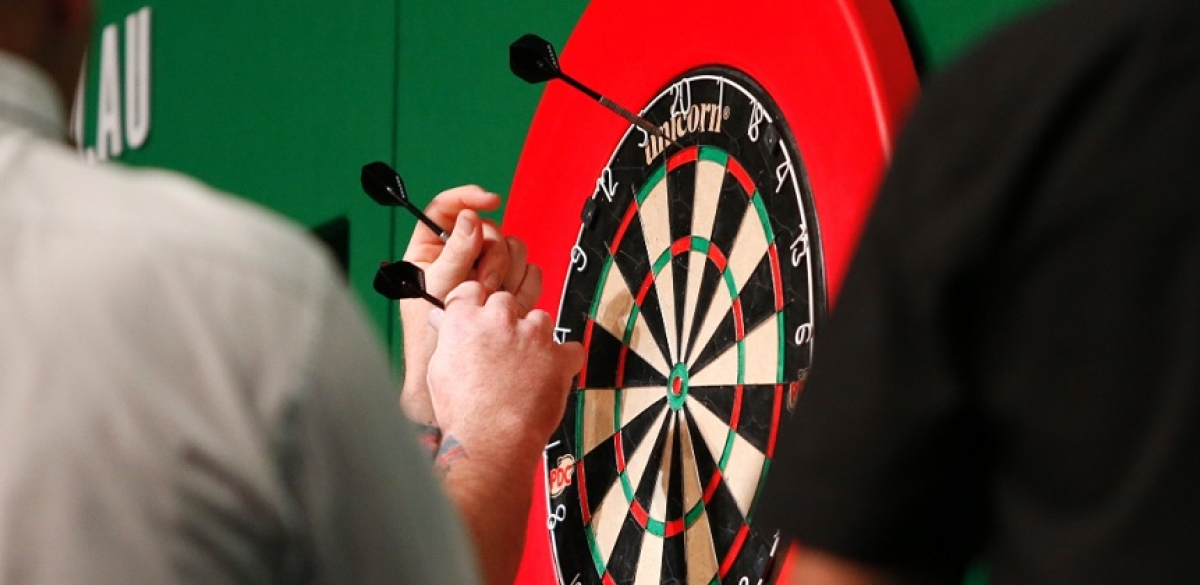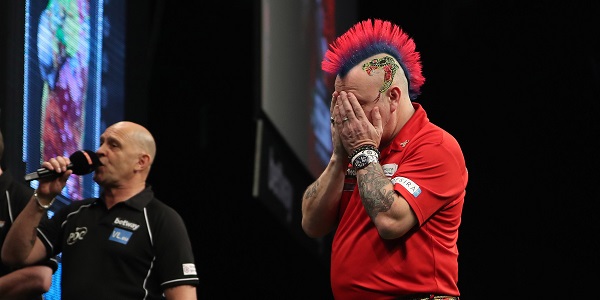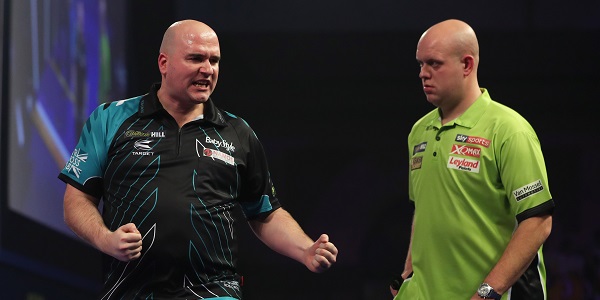
Christopher Kempf, the new statistical analyst of the PDC, looks at how heavy scoring can matter more than it seems.
"Trebles for show, doubles for dough", goes the old darts adage. Peter Wright, who missed six match darts to win the Premier League final, and Michael van Gerwen, who also missed six to advance to the World Championship final, will need no convincing of the truth of that statement.
The anecdotal accuracy of "doubles for dough" is apparent in almost any match - point to a bullseye here, or a missed opportunity to break throw there, and you can identify a point in which the tide of the match changed in favour of the eventual winner.
But outside of a few dramatic and unexpected blunders at the finish line, a player's success correlates more strongly with his ability to hit trebles than with his finishing accuracy.
Across the PDC, professional darts players tend to hit three darts at double for every five missed. A player who gives his opponent three darts at double would expect not to return to the board 75% of the time.
Professionals make a career out of hitting doubles to win legs, and the highest-ranked individuals have years of experience hitting doubles under pressure, with the match on the line or with the crowd supporting their opponents.

Statistically speaking, one would expect Michael van Gerwen to miss five consecutive doubles in a leg just 5% of the time, and expect Peter Wright to miss six 3% of the time.
Both were highly improbable events, unlikely to be repeated in subsequent matches.
At the highest levels of the game, each additional treble hit is effectively an insurance policy against missed doubles.
With each additional dart at double secured by means of heavy scoring in a close match, a player's chances of winning a leg nearly double.
In 2017, players who scored, on average, 4.75 big trebles per leg had a 50% probability of winning more legs than they lost; 4.2 trebles sufficed to give a player the advantage on his own throw, and 5.4 made a player the favorite to break his opponent's throw.
The most dramatic improvements in reaching finishes, doubles and winning legs came from players who were able to make the move from four or five trebles to five or six, throwing more 140s than 100s.
Thus, putting oneself in a situation to have two darts at doubles rather than one is statistically more relevant to a player's chance of winning the match than his ability to hit bullseye checkouts under pressure.
Against a player such as Rob Cross or Michael van Gerwen, who hit more than 40% of their doubles in 2017, the need to hit as many trebles as possible - just to give oneself a chance to win each leg - becomes especially acute.
To have a 50% probability of winning a leg against either player, at least one 180 or two 140s is essential.

Players who hit five trebles per leg against Michael van Gerwen broke throw only 23% of the time, and won after throwing first in a mere 38% of legs.
In a best-of-19 or best-of-21 legs match, it is common to see a player display the necessary treble accuracy in a handful of legs, but because the demands on lower-ranked players are so high over so many legs, Cross and van Gerwen were a combined 31-8 in matches played in those formats, losing only once to a player ranked outside of the top 16.
Nearly as important as the ability to hit trebles is the avoidance of stray darts, especially into the one and treble one segments.
Players who can avoid them entirely, when throwing for any treble - whether they be fives, treble sevens, ones, or treble fours - win nearly 70% of legs.
As few as 1.5 stray darts per leg, on average, correlates with a player losing more than 50% of the time.
The most accurate players miss the 20 or treble less than 5% of the time, or about once every two legs; more than 10% stray darts puts a player at risk not only of losing many more legs, but also of attempting finishes and doubles with which he is not familiar.
Very small differences in accuracy on the main scoring trebles result in enormous competititve advantages for the top players.
The extra dart at double gained by hitting a treble 5% more often, and throwing a stray dart just 5% less, can mean the difference between an 10-9 nailbiter and a 10-5 blowout.
And players need not throw a maximum at every opportunity; in fact, the second treble thrown in a visit gives a much more significant boost to a player's chances of winning a leg than does the third.
In the Masters, where 15-20 leg matches will be commonplace, the rewards for high accuracy and consistency in scoring are clear in the longer format.
Fewer players can hope to match the scoring power of the top seeds over 21 legs than in the typical 11.
After all, it matters not how accurate a player may be on his doubles if he cannot get there quicker than can his opponent.